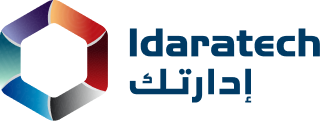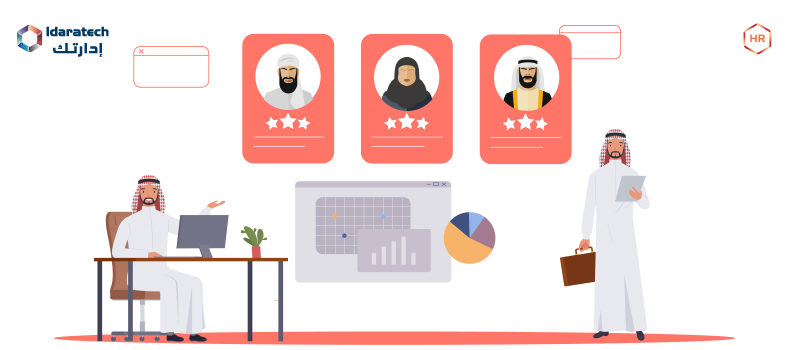Today’s digital world is all about going paperless and digital; software for the Biometric attendance system can attest to that.
Whether you utilize spreadsheets or other manual methods to record and monitor employees’ attendance at your place of business, tracking clock-in and clock-out time, rotational shifts, compensatory offs, and overtime is quite difficult.
By deploying biometric attendance software, you may increase the productivity of your HR department.
The biometric attendance system is used to verify a person’s identity. In addition to fingerprints and face recognition, a person’s iris, facial features, hand size, and other physical characteristics may be detected to help identify them. Also, there are many different types of biometric attendance software for offices, and each one serves a different purpose.
To learn more about the biometric attendance system, types, cost, and usage. Let’s dive in!
Types of Biometric Attendance Software

Using biometric identity technologies, including fingerprint, facial, iris, and other types of recognition, as well as biometric attendance software, allows for the accurate tracking of employee attendance. Here are some of the types of biometric attendance software:
1. Fingerprint recognition software:
Fingerprint recognition software is one of the types of biometric attendance software that uses to identify and verify a person’s identification and distinctive fingerprint. The software collects, stores, compares and verifies the unique fingerprint patterns of each user using sophisticated algorithms before confirming their identification based on a match.
In the types of biometric attendance software, the software analyzes the image to identify and extract the unique features of the fingerprint, such as ridge patterns, bifurcations, and minutiae. The matching stage involves comparing the extracted features with the stored templates in the database. Finally, in the decision-making stage, the software determines whether the fingerprint matches.
Some benefits of fingerprint recognition software include improved security, increased accuracy, and faster processing times.
2. Facial recognition software:
Facial recognition software is one of the types of biometric attendance software that uses algorithms and machine learning to automatically recognize or confirm a person’s identification based on their facial traits. The software analyzes an image or video feed and compares it to a database of known faces to find a match. Applications for this technology include security systems, law enforcement, and marketing.
By identifying and extracting facial elements from an image or video, such as the separation between the eyes, the nose curves, and the face form, facial recognition software may recognize and identify people. These types of biometric attendance software are compared with a database of recognized faces to discover a match.
The quality of the image or video, the lighting, and the algorithm utilized are just a few variables affecting facial recognition software’s accuracy.
Facial recognition technology has been utilized without users’ agreement or little control, leading to privacy and civil liberties issues. As a result, there have been calls for regulation and transparency about using facial recognition software.
3. Iris recognition software:
When an employee clocks in or out of work, this types of biometric attendance software records their iris patterns and uses those to identify them. The iris is the colorful area of the eye that surrounds the pupil. It has a complex pattern of ridges and lines and other distinctive features that are individual to each person.
With a digital camera or scanner, the iris photograph and the iris recognition software analyze the image to extract the specific characteristics of the iris. These characteristics become a digital template or code that can identify a person by checking against a database of recognized iris templates. With an extremely low mistake rate, iris recognition technology is one of the most reliable biometric identification methods.
4. Voice recognition software:
Voice recognition software, also known as speech recognition software, are types of biometric attendance software that designed to recognize and interpret spoken words and phrases. It analyses audio input and converts it into text or commands that computers or other devices can understand using algorithms and machine learning models.
Dictation, voice commands for hands-free device control, and language translation are just a few of the uses for voice recognition software. It utilizes speech-to-text transcription services, automated customer support platforms, and virtual assistants like Siri and Alexa.
Due to machine learning and natural language processing developments, voice recognition software has substantially improved in recent years.
5. Palm recognition software:
The term “palm recognition software” describes types of biometric attendance software that can recognize and authenticate people based on the particular characteristics of their palms. This technology analyses the palm’s shape, lines, and ridges, among other physical characteristics, and compares them to a database of recognized palm prints using a combination of algorithms, sensors, and machine learning.
Access control, time and attendance tracking, and identity verification are just a few of the uses for palm recognition software. Compared to conventional authentication strategies like passwords and PINs, it has several benefits, like improved security, practicality, and accuracy.
6. Bluetooth beacon software:
Bluetooth beacons are small devices emitting signals that nearby Bluetooth-enabled devices can detect. This types of biometric attendance software uses Bluetooth beacons to keep track of employee movements inside a predetermined region and to keep attendance records. They frequently employ applications for asset tracking, indoor navigation, and proximity marketing.
To use Bluetooth beacons, You need a software program that can communicate with Bluetooth beacons and take actions depending on their signals. Here are some popular Bluetooth beacon software options:
- Beacon Management Software: From a single platform, this software enables you to manage and keep an eye on your Bluetooth beacons. You may use it to set up beacon parameters, monitor beacon signal intensity, and keep tabs on battery life.
- Proximity Marketing Software: Software for proximity marketing can assist you in sending clients who are close to your Bluetooth beacons personalized messages or promotions. Additionally, it can monitor client interaction and offer insights into how people respond to your communications.
- Indoor Navigation Software: this software can assist users in navigating indoor environments. Based on the users’ proximity to particular beacons, it can offer them turn-by-turn directions and location-based information.
7. GPS tracking software:
GPS tracking software is one of the best types of biometric attendance software that allows you to track the location of employees and record their attendance based on their proximity to a designated location. Applications for this program include managing fleets, tracking vehicles, keeping an eye on workers, and tracking personal gadgets like smartphones and tablets.
GPS tracking software transmits location information to a central server using GPS-enabled devices like cell phones. Some GPS tracking programs offer other functions like route optimization, real-time traffic updates, and driver behavior tracking. GPS tracking software comes in various forms, from straightforward mobile apps to intricate enterprise-level systems.
In general, an organization’s demands and requirements determine which biometric attendance software is selected.
What are the uses Biometric Attendance Software

Biometric attendance software is a system that uses biometric technology to record employee attendance in an organization. This software replaces traditional attendance methods like manual attendance registers or punch cards. Here are some of the ways biometric attendance software can use:
1. Reliable attendance tracking for employees:
Employee attendance can be accurately tracked using biometric software, lowering the possibility of mistakes and unethical behavior. This program can identify employees and keep track of their attendance using various biometric technologies, including fingerprint, facial recognition, and iris scanning.
2. Time-saving:
For HR staff who would otherwise have to calculate attendance data manually, biometric attendance software can save significant time. With the help of this program, the attendance data is automatically calculated, freeing up HR staff to concentrate on more crucial activities.
3. Cost-effective:
As punch cards and attendance registers are not used, deploying biometric attendance software has a lower implementation cost than traditional attendance techniques. The software is simple to install for existing equipment, such as laptops and mobile devices.
4. Improved security:
Biometric attendance software ensures that only individuals with the proper authorization can access the attendance information. Using biometric technologies, such as fingerprint and facial identification, ensures the inability of attendance data to be altered or misreported.
5. Easy integration with payroll software:
Payroll software can be readily integrated with biometric attendance software, making determining employee compensation based on attendance information simple.
How Much Does it Cost for a Biometric Attendance Software
The cost of biometric attendance software is based on several variables, such as the software’s features and capabilities, the number of employees who will use the system, the type of biometric technology used (such as fingerprint, facial recognition, or iris scan), and the software vendor or provider.
Basic biometric attendance software can cost between $500 and $1500. More money may be needed for more sophisticated systems with capabilities like real-time reporting, analytics, and interaction with other HR or payroll systems.
It is best to conduct extensive research and compare several providers and solutions to locate biometric attendance software that suits your unique requirements and price range. Considering the total cost of ownership throughout the system is crucial because some vendors also provide price options based on the number of users or workers.
Conclusion
Biometric attendance management software may be used efficiently across various businesses, whether in hospitals, retail establishments, or other workplaces, and cannot disregard. Also, the biometric software’s standard pricing encourages every business to integrate it into their system.
So, for better administration, if you already use the biometric device to track attendance, we advise syncing it with the biometric attendance software. Do you need help deciding which biometric attendance solution best meets your needs? Reach out to Idaratech, and we’ll assist you in choosing the ideal solution for your company.

